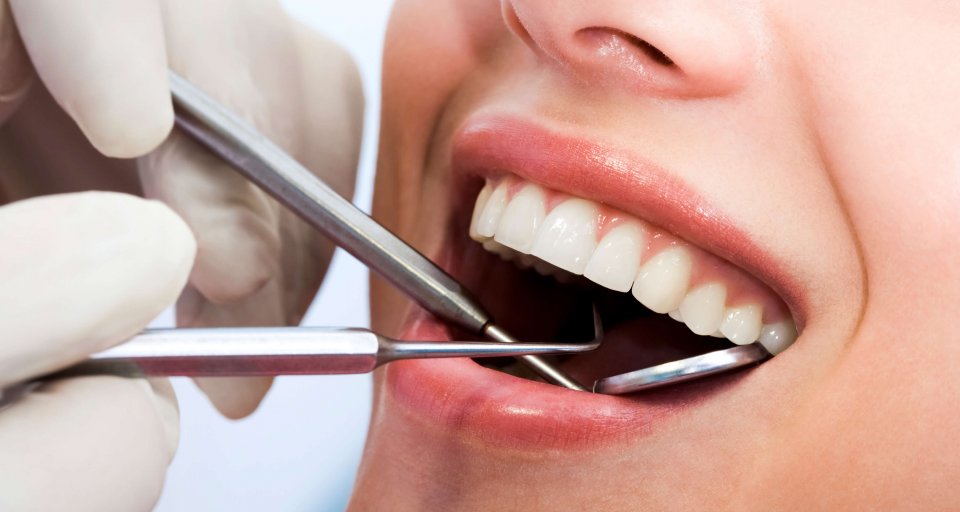Have you ever sat back in the chair and your dentist’s office and been told that you needed to have a “deep cleaning” or “periodontal scaling and root planing?” If you haven’t been that good about keeping up with the flossing or your six-month cleanings, it probably isn’t a surprise.
Here’s what you need to know:
A “Regular” Cleaning is a Prophylactic Cleaning
Prophylactic cleanings are preventive in nature. They’re designed to allow your hygienist to remove the tartar, stain, and bacterial buildup that has collected between your six-month maintenance appointments. If you’re brushing and flossing properly, this buildup is kept to a minimum.
Deep Cleanings are Therapeutic in Nature
Diseased gum tissues develop as the result of inadequate oral hygiene practices. As tartar builds up along the gum lines, it begins extending into the “pockets” below the surface. The heavier the buildup becomes, the deeper the pockets get. A healthy pocket is 2-3mm deep. 4, 5, or 6mm pockets require special tools and more time to clean…thus, making your smile ineligible for a “preventive” cleaning because disease has finally set in.
Your dentist and hygienist can tell that the gums are diseased by measuring the depth of the pockets (probing) and assessing the bone quality on your x-rays. Diseased periodontal tissues can show signs of:
- Bleeding when you brush and floss your teeth
- Recession (“long teeth”)
- Problems with food packing deep under the gums
- Tooth mobility or loss
- Tooth and gum sensitivity
What Does the Appointment Look Like?
As your hygienist cleans your teeth during a preventive (“regular”) appointment, he or she will clean the areas above your gum line and just into the pockets to lift light to moderate buildup. For most people, this takes 30-50 minutes to complete and is fairly comfortable. Once you’re finished, the hygienist will usually polish away any surface stains that have accumulated. Some people find the process relaxing, while others get a little nervous, but the entire visit can be performed without any medication.
During a deep cleaning (periodontal scaling) most hygienists will focus on one quadrant or one half of your mouth at a time. In many situations, you will have your mouth numbed with local anesthesia to prevent discomfort. Others prefer to go without an injection or ask for laughing gas. It depends on your comfort level and the extent of the infection.
Special instruments are used to carefully scale all surfaces of the tooth roots below the gum line. Depending on how advanced the periodontal disease is, locally placed antibiotics or antiseptic rinses may also be used to medicate the pockets. The entire visit takes about 90 to 120 minutes to complete. Then, you’re rescheduled to have the other half of your mouth cleaned about a week later. This prevents you from having your entire mouth numbed up at one time.
It’s Not “Just a Cleaning”
If it’s the first time that you’ve been told you need to have a deep cleaning, you, like many others, may ask your dentist why you just can’t have a regular cleaning. Unfortunately, it’s just not that simple. Even your dental insurance will dictate whether or not a certain procedure can be performed in the presence of disease.
Imagine that you had a deep infection on your arm, but you just applied topical ointment and a bandage. Inside, it remained swollen. The bandage might make the surface look better, but you’re jeopardizing your health. The very same thing can be said for your smile! Severe gum disease has a direct correlation to health problems like stroke, diabetes, premature labor, and even erectile dysfunction. Your mouth is the gateway to your body.
Recare Appointments Following Your Deep Cleaning
After your series of deep cleanings, your hygienist and dentist will need to evaluate your oral health at periodic intervals to ensure everything is healing properly. Most people return in one to three months for a follow-up cleaning. From there, periodontal maintenance cleanings are scheduled about every three to four months to preserve and prolong your oral health. As you respond, your appointments grow further and further apart.
Because gum disease is not reversible, it’s important to treat it as soon as signs of gum and bone loss become evident. During your cleanings, your hygienist will show you tricks and tools to clean hard-to-reach areas that harbor such infections. Without them, you could lose your teeth for good!
Don’t let your dental insurance company punish you for falling behind on your oral health care. Consider using a discount dental plan for affordable cleanings and deep cleanings to keep your smile for life. If you have any questions about what plan is best for you and your family, contact one of our dental savings experts and we can help get you on the right plan!


